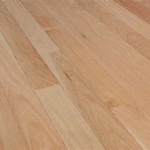Should Curtains Drag On The Floor? Exploring the Aesthetics and Practicalities of Pooling Curtains
The decision of whether curtains should drag on the floor is a design choice steeped in both aesthetic preferences and practical considerations. Pooling curtains, where excess fabric gathers on the floor, create a specific visual impact and ambiance. However, this style is not universally suitable and necessitates careful evaluation of its pros, cons, and compatibility with the overall design scheme of a space. This article will examine the advantages, disadvantages, and essential factors to consider when determining if this curtain style is appropriate for a given room.
The Aesthetic Appeal of Pooling Curtains
The primary reason individuals opt for pooling curtains is their perceived aesthetic advantage. This style exudes a sense of luxury, opulence, and romance. The extra fabric creates a soft, flowing effect that adds visual interest and a sense of drama to the room. This effect is particularly noticeable in rooms with high ceilings, where the extended length of the curtains accentuates the vertical space and contributes to a more spacious and grand feel. Pooling can also soften the harsh lines of a room, creating a more inviting and comfortable atmosphere.
The visual impact of pooling is often associated with traditional or romantic interior design styles. Rooms decorated in a Victorian, French Country, or Bohemian style frequently incorporate pooling curtains to enhance the overall aesthetic. The draped fabric adds a layer of texture and depth, contributing to a layered and visually rich environment. Furthermore, the pooling effect can be used to subtly mask minor imperfections in flooring or uneven window frame heights, providing a practical, albeit aesthetically driven, solution.
The amount of pooling desired is also a key consideration. A subtle pool, where the curtains extend only a few inches onto the floor, creates a more understated elegance. A more dramatic pool, with several inches or even a foot of fabric gathering on the floor, makes a bolder statement and emphasizes the luxuriousness. The choice depends entirely on the desired visual impact and the overall design goals for the room.
Practical Considerations and Potential Drawbacks
While the aesthetic appeal of pooling curtains is undeniable, several practical considerations must be addressed before committing to this style. One of the most significant concerns is the potential for increased dust and dirt accumulation. The extra fabric lying on the floor acts as a magnet for dust, pet hair, and other debris. This necessitates more frequent cleaning and maintenance to keep the curtains looking their best and to prevent the build-up of allergens.
The choice of fabric is also crucial when considering pooling curtains. Delicate fabrics such as silk or linen are particularly susceptible to damage from abrasion and wear and tear when exposed to the floor. More durable fabrics, such as velvet or heavy cotton blends, are better suited for pooling as they can withstand the daily wear and tear. Regardless of the fabric choice, regular vacuuming or brushing is essential to maintain the curtains' appearance and prevent permanent staining.
Another practical consideration is the potential for the pooling fabric to become a tripping hazard, especially in high-traffic areas or homes with young children or pets. Careful placement of furniture and strategic arrangement of the curtain fabric can help mitigate this risk, but it remains a factor to consider. Additionally, pooling curtains may not be ideal for homes with individuals who have mobility issues or use wheelchairs or walkers, as the extra fabric can impede movement and create obstacles.
Furthermore, pooling curtains can be less energy-efficient than curtains that hang just above the floor. The extra fabric provides an additional layer of insulation, but it can also trap air and prevent proper airflow, potentially leading to temperature fluctuations within the room. This is particularly important to consider in rooms with radiators or other heating elements located near the windows, as the pooling fabric can obstruct the heat flow and reduce the effectiveness of the heating system.
Key Factors to Consider Before Opting for Pooling Curtains
Several key factors should be analyzed before deciding if pooling curtains are the right choice for a specific room. These factors encompass the room's function, traffic patterns, existing décor, and individual lifestyle preferences.
Firstly, the room's function plays a significant role in determining the suitability of pooling curtains. In formal living rooms or dining rooms, where aesthetics are prioritized, pooling curtains can enhance the overall ambiance and create a sense of elegance. However, in more functional spaces such as kitchens, bathrooms, or children's bedrooms, the practical drawbacks of pooling curtains may outweigh their aesthetic benefits. These spaces are typically more prone to spills, dirt, and general wear and tear, making the maintenance of pooling curtains more challenging.
Secondly, the traffic patterns within the room must be carefully considered. In high-traffic areas such as hallways or entryways, where people are constantly moving, pooling curtains are generally not recommended due to the increased risk of tripping and the potential for damage to the fabric. In rooms with less foot traffic, such as bedrooms or reading nooks, pooling curtains may be a more viable option.
Thirdly, the existing décor and overall style of the room should complement the pooling curtain style. Pooling curtains are generally more appropriate for traditional or romantic interiors, where their luxurious and flowing aesthetic aligns with the overall design scheme. In more minimalist or contemporary spaces, pooling curtains may appear out of place and disrupt the clean lines and streamlined aesthetic. However, with careful selection of fabric and color, pooling can be incorporated into modern spaces as well as long as it serves the room's purpose.
Finally, individual lifestyle preferences and maintenance capabilities should be taken into account. If an individual is willing to invest the time and effort required to maintain pooling curtains, including regular vacuuming, spot cleaning, and occasional professional cleaning, then this style may be a suitable choice. However, if an individual prefers a low-maintenance lifestyle and is not willing to dedicate the necessary time and effort to keep the curtains looking their best, then a more practical curtain length that hangs just above the floor may be a better option.
In conclusion, the decision of whether or not curtains should drag on the floor is a personal one that depends on a variety of factors. While the aesthetic appeal of pooling curtains is undeniable, it is crucial to carefully consider the practical implications and potential drawbacks before making a decision. By evaluating the room's function, traffic patterns, existing décor, and individual lifestyle preferences, individuals can determine if pooling curtains are the right choice for their space.

Should Curtains Touch The Floor Expert Tips Shade Store

Should Curtains Touch The Floor Expert Tips Shade Store

How Much Should A Curtain Drag

Should Curtains Touch The Floor Expert Tips Shade Store

Should Curtains Touch The Floor Expert Tips Shade Store

Should Curtains Touch The Floor Expert Tips Shade Store

How To Hang Drapes At The Proper Height Family Handyman

Should Curtains Touch The Floor Expert Tips Shade Store

When Should Curtains Touch The Floor Quickfit Blinds And

Drapes That Drag Life Unstyled








